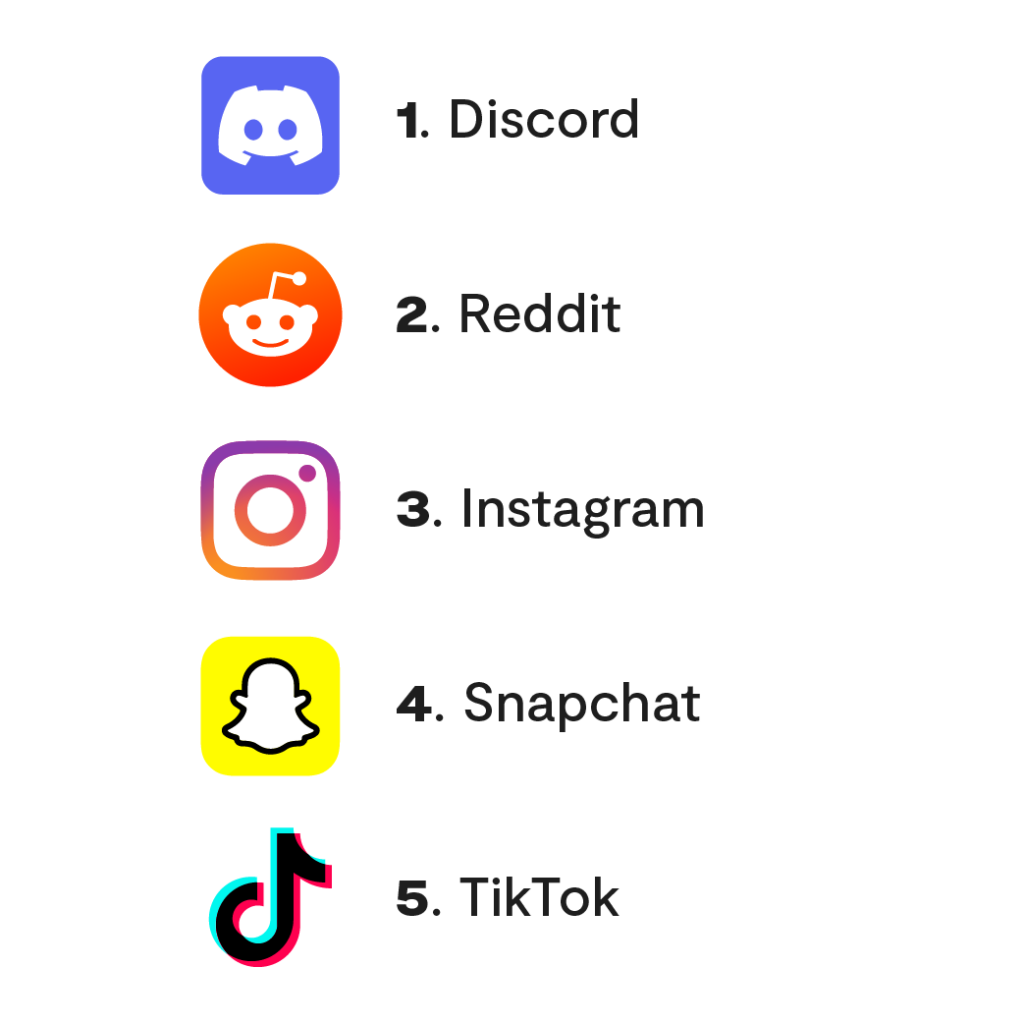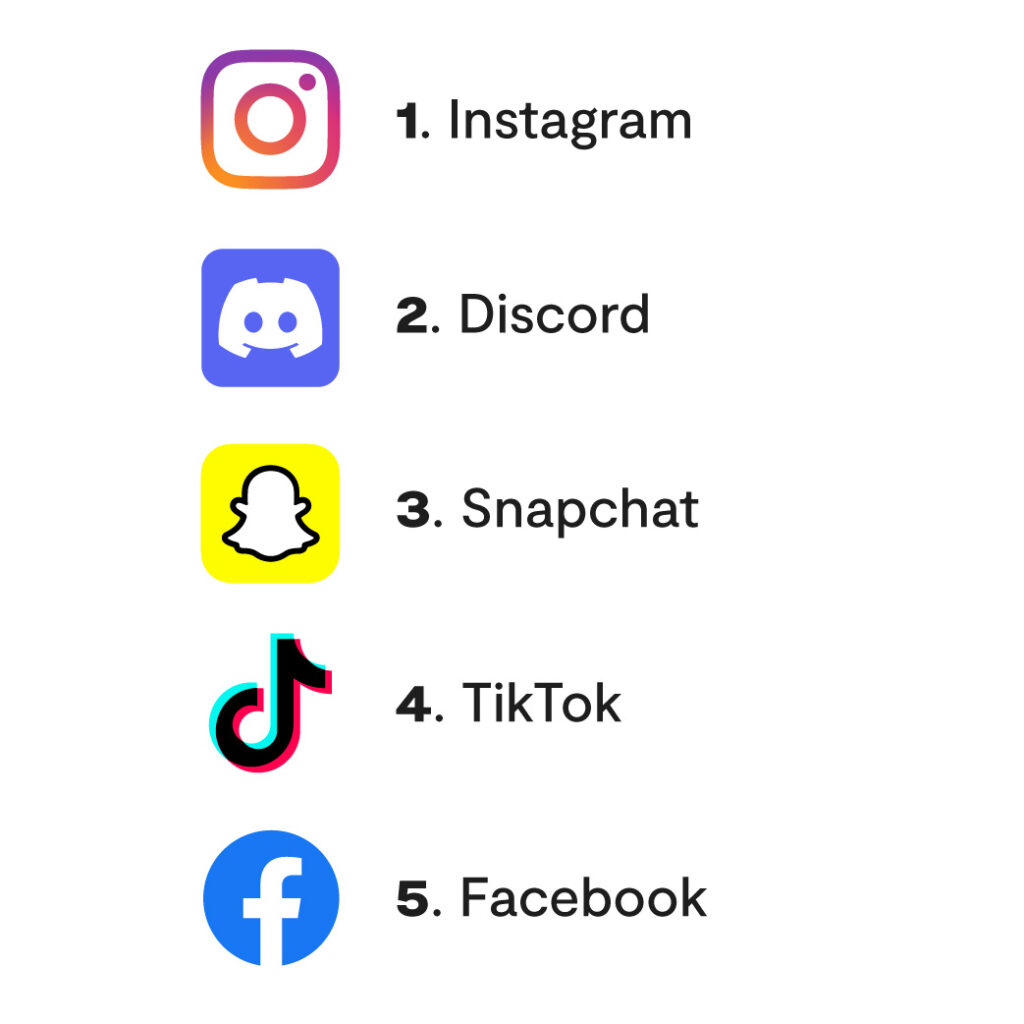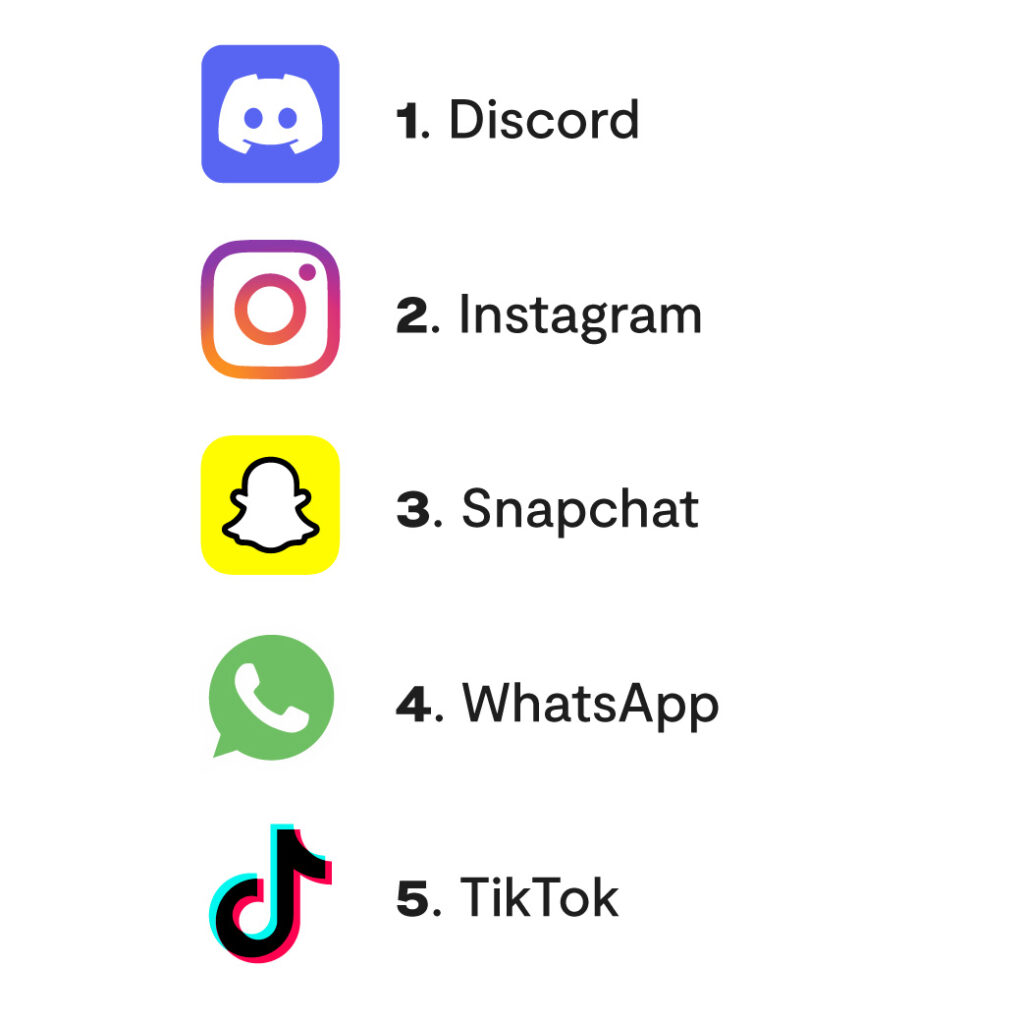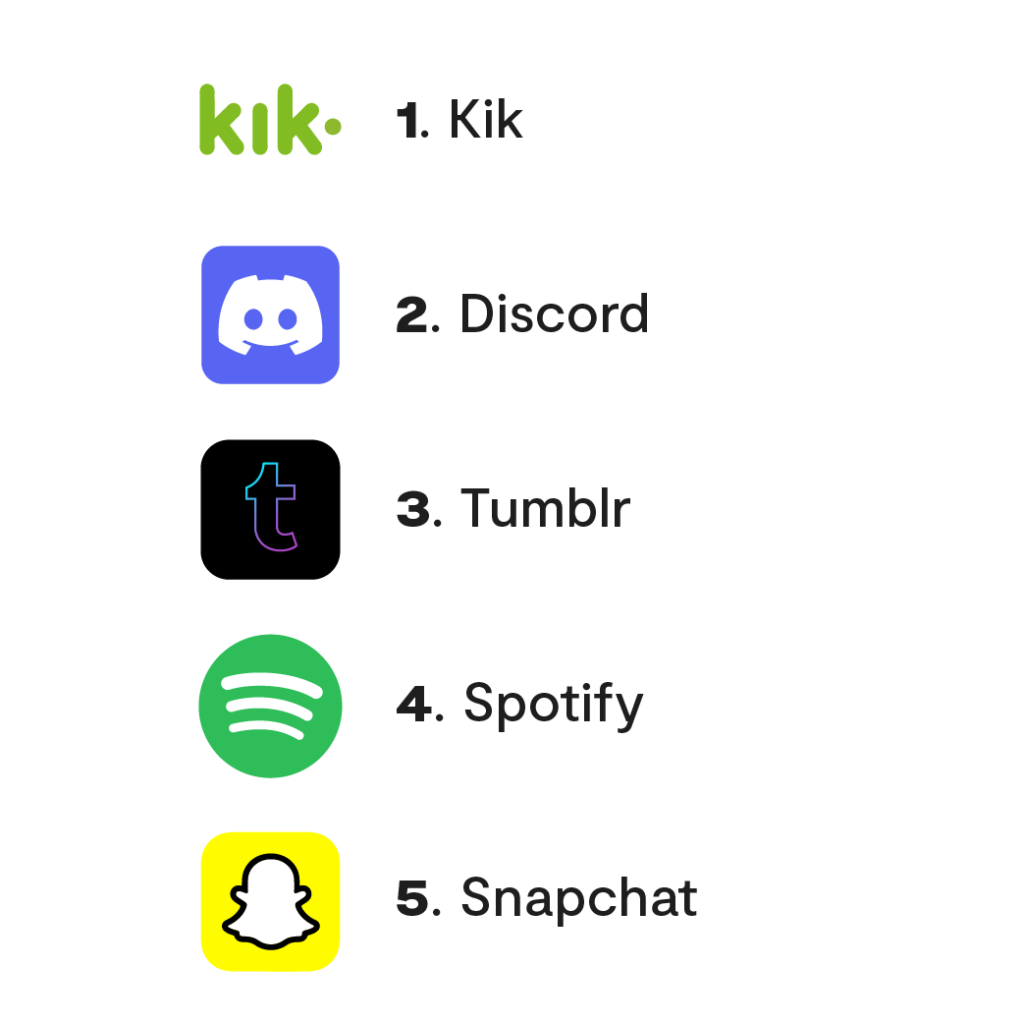Bark’s 2021 Annual Report
Research on Children and Technology
In 2021, Bark analyzed more than 3.4 billion messages across texts, email, and 30+ apps and social media platforms. These findings exclude school-based accounts.
Our 2021 research can give parents and guardians important insights into what it’s like to grow up on the internet today, allowing them to better protect their children while they use technology.
Bark’s 2021 Research Data 📈
In 2021, Bark saw a 25.15% increase in alerts for self-harm and suicidal ideation among kids ages 12–18, as compared with 2020.
Self-Harm/Suicide
43.09% of tweens and 74.61% of teens were involved in a self-harm/suicidal situation.
Alerts for potential self-harm and suicide include anything from text messages about cutting to an email draft of a suicide note.
National statistics surrounding self-harm/suicide:
- Suicide is the second-leading cause of death for ages 10–14.
- Every day in the U.S., there are an average of over 3,703 suicide attempts by young people grades 9-12.
Sexual Content
68.97% of tweens and 90.73% of teens encountered nudity or content of a sexual nature.
Alerts for sexual content can be anything from web searches for explicit content to a child receiving nude photos.
Recent information regarding kids and sexual content:
- Sexting laws vary from state to state. Be sure to know the laws in your area.
- Research shows that teen sexting is associated with an increased risk of bullying victimization.
In 2021, Bark alerts for anxiety were most often sent for kids age 15.
Anxiety
19.69% of tweens and 42.05% of teens used language about or were exposed to anxiety.
Alerts for anxiety are sent when kids discuss having anxiety or mention feeling anxious consistently.
Concerning stats involving kids and anxiety:
- Anxiety disorders affect 25.1% of children between the ages of 13 and 18.
- Research shows that untreated children with anxiety disorders are at greater risk to perform poorly in school, miss out on important social experiences, and to misuse substances.
In 2021, Bark saw a 21.2% increase in alerts for drugs/alcohol as compared with 2020.
Drugs/Alcohol
75.35% of tweens and 93.31% of teens engaged in conversations surrounding drugs/alcohol.
Alerts for drugs and alcohol can range from texts about prescriptions to videos of a child consuming illegal substances.
General drug/alcohol facts affecting kids today:
- 11.7% of Americans over 12 years of age use illegal drugs.
- Alcohol use fell from 21% to 17% among eighth-graders, from 41% to 29% among 10th-graders, and from 55% to 47% among 12th-graders, according to a 2021 survey.
Bullying
72.09% of tweens and 85.00% of teens experienced bullying as a bully, victim, or witness.
Alerts for cyberbullying range from mean-spirited teasing to hateful threats and provoking statements.
Additional external bullying statistics:
- According to the CDC, one in four students reports being bullied.
- Teachers state that cyberbullying is their top safety concern in classrooms according to a recent Google survey.
In 2021, girls age 17 were most likely to engage in conversations about depression.
Depression
32.11% of tweens and 56.40% of teens engaged in conversations about depression.
Alerts for mental health range from mild pessimism to talking about or planning to attempt suicide.
More information about teen mental health:
- In 2021, the American Academy of Pediatrics declared a state of emergency in child and adolescent mental health.
- Depression in youth has doubled since the beginning of the pandemic.
In 2021, Bark alerts for disordered eating were most often sent for 17-year-old girls.
Disordered Eating
1.96% of tweens and 7.66% of teens engaged with or encountered content about disordered eating.
Alerts for disordered eating range from mentions of dangerous dieting practices all the way to discussions of anorexia, bulimia, and body dysmorphia.
Relevant stats concerning kids and disordered eating:
Predators
9.95% of tweens and 20.54% of teens encountered predatory behaviors from someone online.
Alerts for predators are sent when a conversation is sexual in nature and there’s a confirmed age difference.
Important information concerning online predators:
- It only takes 8 minutes for a predator to form a bond with a child.
- Last year, there was a 97.5% increase in online enticement reports, according to NCMEC.
Violence
80.82% of tweens and 94.50% of teens expressed or experienced violent subject matter/thoughts.
Alerts for violence range from texting a friend about a fight at school to direct threats against a child.
Relevant U.S. school shooting statistics:
- Up to 1 billion children aged 2–17 have experienced physical, sexual, or emotional violence or neglect in the past year.
- A recent study warned of the high risk of childhood exposure to family violence during the COVID-19 pandemic.
Bark 2021 Top Apps/Platforms
for Concerning Content
Bark analyzed more than 2 billion online activities across 30+ apps and social media platforms.
"Activities" include text messages, emails, social media posts, DMs, chats, song lyrics, captions, and more.

Severe Sexual Content
Top 5 Social Apps/Platforms Flagged

Severe Suicidal Ideation
Top 5 Social Apps/Platforms Flagged

Depression
Top 5 Social Apps/Platforms Flagged

Body Image Concerns
Top 5 Social Apps/Platforms Flagged

Severe Bullying
Top 5 Social Apps/Platforms Flagged

Hate Speech
Top 5 Social Apps/Platforms Flagged

Severe Violence
Top 5 Social Apps/Platforms Flagged


Help Keep Your Kid Safe Online
In addition to providing you with up-to-date information like our 2021 research, Bark can help you protect them online and in real life with timely alerts so you can know when something might be wrong. Sign up today for a free, one-week trial.
